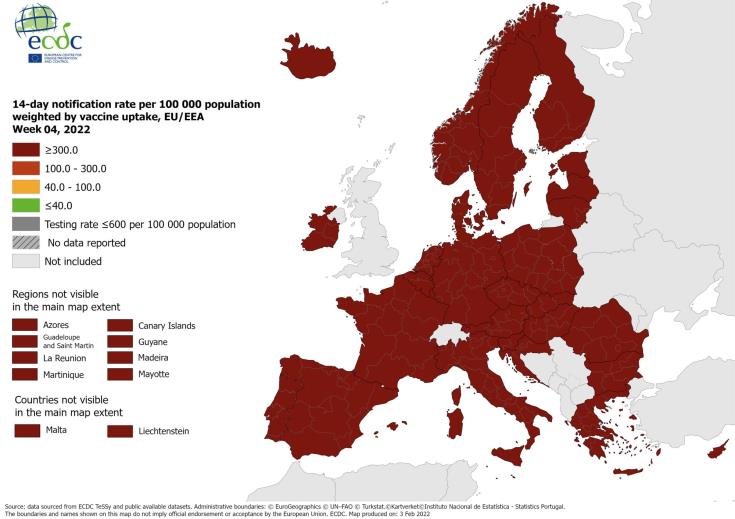All regions of the European Union and the European Economic Area (EEA) are now in the "deep red" category as the indicator of new cases COVID-19 in the last 14 days per 100 thousand people, weighted by the vaccination rate in each region, exceeds 300, according to the latest epidemiological map of the European Center for Disease Prevention and Control (ECDC).
This is the first regular update of the Charter, issued by the ECDC every Thursday, following the adoption of new travel regulations and recommendations within the European Union. In the map released on Tuesday, on the occasion of the implementation of the regulations from February 1st, only part of Romania was in the red category.
The map is essentially aimed at informing local authorities and citizens about the epidemiological situation at the local level to facilitate restrictive decisions and citizens' travel decisions.
The map is expected to return to a more mixed picture in the coming months as the current wave of pandemic spread subsides.
It is noted that this map does not record deaths or serious hospitalizations. It is also not recorded how many of the total cases are due to the Omicron variant.
The "green" category is defined as the areas where the weighted case index is below 40. When the index is below 100 but equal to or greater than 40, they fall into the "orange" category. When the index is below 300 but is equal to or greater than 100, they fall into the "red" category. When the index is equal to or greater than 300, they fall into the "deep red" category.
The map and related data are published by the ECDC every Thursday, supporting efforts based on a relevant EU Council proposal to coordinate pandemic restrictions due to the pandemic, which was revised on 25 January and will take effect on 1 February.
The maps are based on the latest data in the database sent by Member States to the European Monitoring System (TESSy) by midnight on Tuesday.
